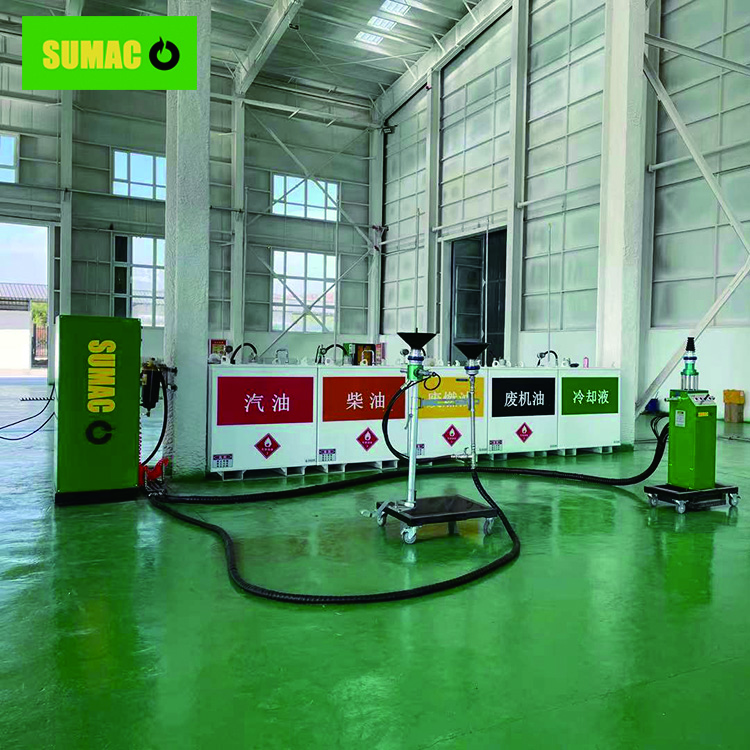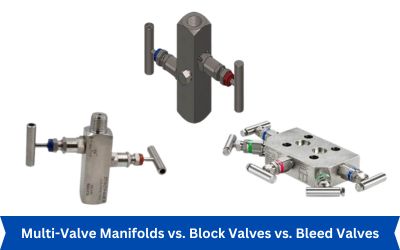Fluid control systems depend on the right choice of valve types to ensure safe, efficient, and reliable operations. Multi-valve manifolds, block valves, and bleed valves each play a critical role in managing fluid flow, isolation, and pressure regulation across various industrial applications. Whether you're working with oil and gas systems, HVAC setups, or chemical processing units, understanding the functions and differences between these valve types is essential for making informed decisions that optimize performance and safety.
Understanding the Basics of Multi-Valve Manifolds, Block Valves, and Bleed Valves
Each type of valve serves a unique purpose within a fluid control system. Here's an overview of the three main types:
-
Multi-Valve Manifolds:
Multi-valve manifolds are designed to manage multiple lines or complex flow paths within a single unit. These systems integrate several valves into one compact assembly, allowing for easier control, monitoring, and isolation of different parts of the system. They are commonly used in high-precision applications such as pressure measurement, flow regulation, and process control. Their ability to handle multiple functions makes them ideal for space-constrained environments where efficiency is key.
-
Block Valves:
Block valves are primarily used for isolating sections of a pipeline or system. Their simple design allows them to either fully open or close a flow path, making them reliable tools for maintenance, shutdowns, or emergency situations. Block valves are often found in high-pressure systems where safety and integrity are crucial. They provide a straightforward solution for preventing unwanted fluid movement, ensuring that specific areas can be safely accessed or isolated without affecting the rest of the system.
-
Bleed Valves:
Bleed valves are used to release small amounts of fluid or gas from a system, typically for pressure relief or venting. They help prevent overpressure, which can lead to equipment damage or safety hazards. A common example is the bleed air valve, used in HVAC and pneumatic systems to release trapped air and maintain stable pressure. These valves are essential for maintaining system balance and ensuring smooth operation, especially in systems that require frequent adjustments or monitoring.
Together, these valves form the foundation of many industrial fluid control systems, offering flexibility, reliability, and precision in managing fluid flow and pressure.
Applications of Each Valve Type in Industrial Systems
Each valve type has distinct applications depending on the system requirements:
-
Multi-Valve Manifolds:
These are widely used in industries such as oil and gas, chemical processing, and water treatment, where multiple control points are needed in a compact space. They allow for centralized management of several lines, reducing complexity and improving operational efficiency. Multi-valve manifolds are particularly useful in systems that require precise pressure measurements and flow control.
-
Block Valves:
Block valves are commonly used in systems where certain sections need to be completely shut off for maintenance or safety. They are ideal for high-pressure environments where system integrity must be maintained. Their simplicity and reliability make them a preferred choice for critical isolation tasks.
-
Bleed Valves:
Bleed valves are essential in systems that require controlled pressure release, such as HVAC, pneumatic, and hydraulic systems. They help prevent overpressurization by allowing small amounts of fluid or gas to escape. This not only protects equipment but also ensures safer and more stable system operation.
Advantages and Limitations of Each Valve Type
Understanding the pros and cons of each valve type can help you choose the best option for your application:
-
Multi-Valve Manifolds:
- Advantages: Compact design, integrated functionality, reduced leak points, and simplified installation.
- Limitations: Higher initial cost, more complex maintenance due to their integrated structure.
-
Block Valves:
- Advantages: Simple operation, high reliability, suitable for high-pressure environments, and effective for isolation.
- Limitations: Limited versatility compared to multi-valve manifolds, mainly used for blocking flow.
-
Bleed Valves:
- Advantages: Essential for pressure release, precise control over small fluid or gas releases, and critical for overpressure prevention.
- Limitations: Limited to venting or pressure relief, not typically used for flow control.
Choosing the Right Valve for Your System
Deciding which valve type to use depends on your system’s needs:
- Multi-Valve Manifolds are ideal for complex systems with multiple control points, especially when space is limited.
- Block Valves are best for reliable isolation in high-pressure or critical applications.
- Bleed Valves are essential for systems requiring regular pressure adjustments or air venting.
When selecting valves, consider factors like system pressure, operational complexity, and whether isolation or pressure relief is a priority.
Common Configurations and Combinations in Industrial Use
In many industrial systems, combinations like block and bleed valves are used together to enhance control and safety. These setups combine the isolation capabilities of a block valve with the pressure relief function of a bleed valve, providing a complete solution for both isolation and safe pressure release.
For example, in HVAC and pneumatic systems, bleed valves are often used alongside block valves to ensure proper air venting and pressure management. This helps prevent issues caused by trapped air and ensures consistent system performance.
If you're looking for high-quality valves to improve your fluid control systems, consider visiting The Transmitter Shop. Our team of experts can guide you in choosing the right valves for your specific needs. Contact us today to learn more about our products and services!
SUMAC cooperated with ARS (Australia) to design and manufacture ELV drainage equipments. It realizes the pretreatment and extraction of all kinds of residual oil, solid waste and parts in scrapped vehicles. In addition, according to the situation of each scrapped car, workers can automatically adjust the position of the vehicle, realizing the concept of safety and environmental protection.
Now, Sumac has successfully exported Elv Recycling Oil Drainage Stations to Australia, Canada, France and other developed countries. If you also want to buy Elv Recycling Oil Drainage Station,Elv Fixed Frame,Elv Tilting Lift, please feel free to contact with us.

Elv Drainage,Elv Recycling Oil Drainage Station,Elv Fixed Frame,Elv Tilting Lift
SUMAC AUTO RECYCLING EQUIPMENT CO., LTD , https://www.autorecyclingchina.com
